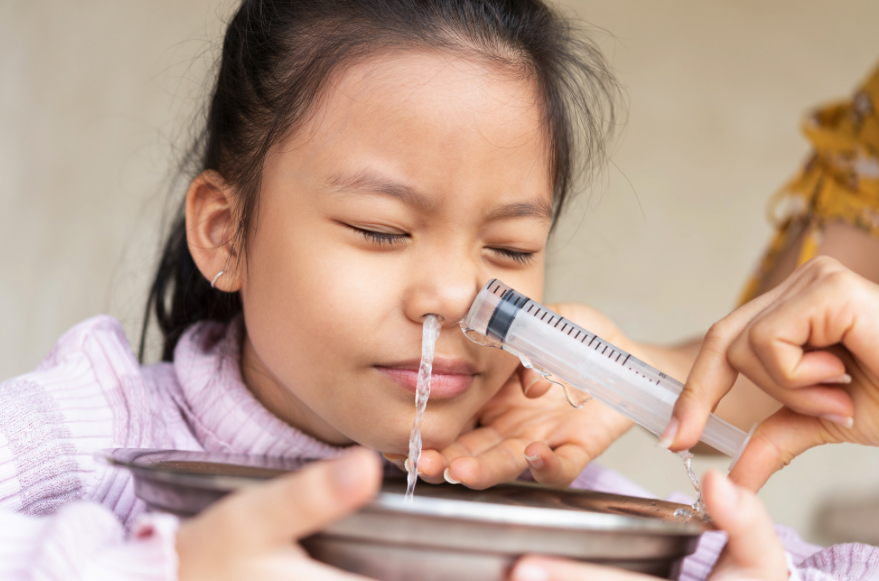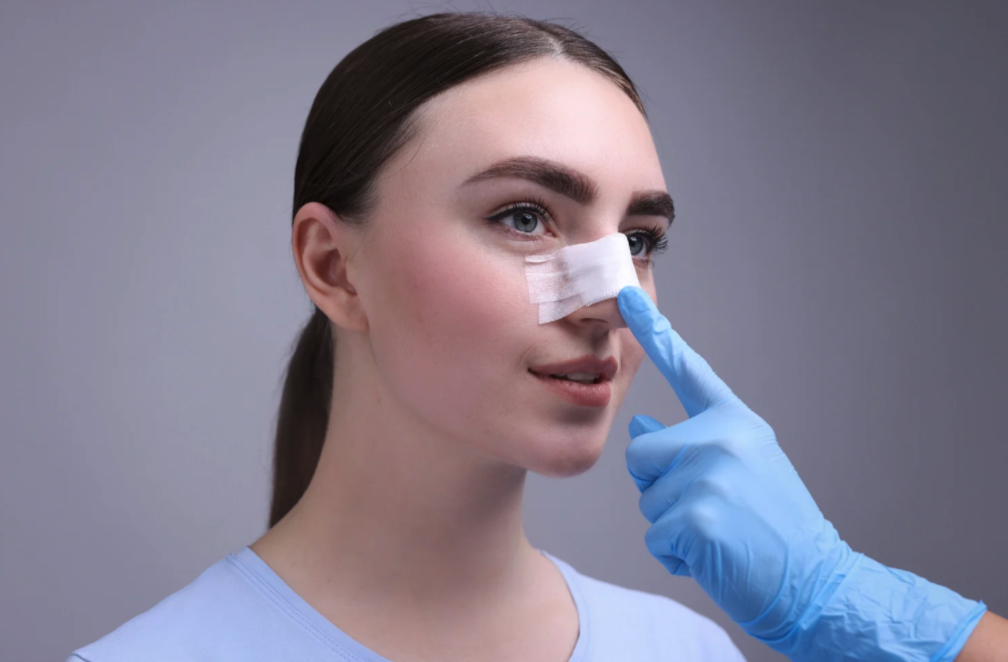
What to Expect and How to Care for Your Nose after nasal surgery.
Nasal surgery, whether performed for a deviated septum (septoplasty), chronic sinus problems (functional endoscopic sinus surgery), removal of nasal polyps, or even cosmetic improvement (rhinoplasty), can significantly improve breathing, reduce congestion, and enhance your quality of life.
But recovery is not just about “waiting it out.” What you do in the days and weeks after the procedure plays a crucial role in your healing and final results.
This guide covers:
- What to expect after nasal surgery
- Step-by-step post-surgery care
- Activities and habits to avoid
- Red flags that mean you should contact your surgeon
1. What to Expect After Nasal Surgery
It’s normal to have changes in how your nose feels, looks, and functions during the recovery period.
a) Swelling and Nasal Congestion
Your nasal passages will feel blocked or “stuffy” for the first 1–2 weeks due to swelling and possible nasal packing or splints. Even if you can’t breathe fully through your nose right away, this is part of the normal healing process.
b) Mild Bleeding or Blood-Tinged Mucus
Small amounts of bleeding, especially when bending forward or after sneezing, can happen for several days. Your doctor may give you a small drip pad to wear under your nostrils.
c) Discomfort and Facial Pressure
You may feel mild pain, pressure around your eyes, cheeks, and forehead, or a dull headache. These usually respond well to prescribed pain medication or simple over-the-counter pain relief.
d) Temporary Loss of Smell or Taste
Swelling can temporarily affect your smell and taste. As swelling subsides, these senses usually return over weeks to months.
e) Bruising Around the Eyes
(especially after rhinoplasty)
If your surgery involved nasal bones, some patients may notice “black eyes” for about 7–10 days. This will fade with time.
2. Step-by-Step Post-Nasal Surgery Care
Following your ENT surgeon’s advice closely will help you heal faster and avoid complications.

a) Keep Your Head Elevated
- Sleep with your head raised on 2–3 pillows or in a recliner for at least the first week.
- Elevation reduces swelling and bleeding risk.
b) Use Saline Sprays or Rinses
- Start saline rinses once your surgeon gives the go-ahead (often within 24–48 hours).
- Use isotonic or slightly hypertonic saline to keep the nasal lining moist and help remove crusts and mucus.
- Avoid forceful sniffing or blowing during rinses.
c) Avoid Straining
- No heavy lifting, intense exercise, or bending over for 1–2 weeks.
- Straining increases nasal pressure and can cause bleeding.
d) Take Medications as Prescribed
- Complete your course of antibiotics (if given).
- Take pain medication before discomfort becomes severe.
- If you were prescribed a steroid spray or ointment, use it exactly as instructed.
e) Maintain Good Hygiene
- Wash your hands before touching your face or nose.
- Avoid dusty, smoky, or polluted environments while healing.
f) Follow-Up Appointments Are Essential
- Your surgeon may need to remove splints, sutures, or nasal packing.
- In-office cleaning (“debridement”) helps prevent crust buildup and scarring inside the nose.
3. Things to Avoid After Nasal Surgery
- ❌ Do not blow your nose for at least 1–2 weeks. If you must sneeze, do so with your mouth open.
- ❌ Avoid very hot showers or spicy foods in the first few days—they may trigger nasal bleeding.
- ❌ No smoking, vaping, or alcohol for at least 1 week—these slow healing.
- ❌ Avoid swimming and diving for at least 4–6 weeks.
4. When to Contact Your Doctor Immediately
While mild discomfort and small amounts of bleeding are normal, contact your surgeon if you notice:
- Heavy or continuous nosebleeds
- Fever above 38°C (100.4°F)
- Sudden worsening of pain or swelling
- Thick, yellow/green discharge with a foul smell
- Changes in vision, severe headache, or neck stiffness
5. Recovery Timeline (General Guide)
| Time After Surgery | What to Expect | Care Focus |
|---|---|---|
| First 48 hours | Swelling, congestion, mild bleeding | Rest, head elevation, pain control |
| Day 3–7 | Bruising peaks, nasal blockage from swelling and crusting | Gentle saline sprays, avoid strain |
| Week 2–3 | Swelling improves, breathing easier | Resume light activities |
| Week 4+ | Most swelling gone, final results developing | Continue follow-ups, nasal care |
Key Takeaway
Your nasal surgery recovery is a partnership between you and your surgeon. By following aftercare instructions, protecting your healing nose, and attending all follow-up visits, you’ll maximise the benefits of your procedure and reduce the risk of complications.
Frequently Asked Questions (FAQ) About Post-Nasal Surgery Care
1. How long does it take to fully recover from nasal surgery?
Most patients feel significantly better within 2–3 weeks, but full internal healing can take up to 3–6 months, depending on the surgery type.
2. Can I blow my nose after nasal surgery?
No. Avoid nose-blowing for at least 1–2 weeks or until your surgeon says it’s safe. If you need to sneeze, keep your mouth open.
3. When can I start exercising again?
Light walking can start after a few days, but avoid strenuous exercise, running, or heavy lifting for at least 2 weeks.
4. Is it normal to have numbness in my nose or upper teeth?
Yes. Temporary numbness in the nose, upper lip, or teeth can occur due to nerve irritation and usually improves over weeks to months.
5. How can I reduce swelling faster?
Keep your head elevated, apply cold compresses to your cheeks (not directly on the nose), and avoid salty foods and alcohol.
6. When will my sense of smell return?
Your sense of smell usually returns gradually over a few weeks to months as swelling subsides.
7. Can I use a humidifier after surgery?
Yes. A cool-mist humidifier can keep the air moist and prevent your nose from drying out during recovery.
For Video on Nasal Douching Visit : Nasal Rinse
For more information about our Nose and Sinus services : Here


Comments are closed